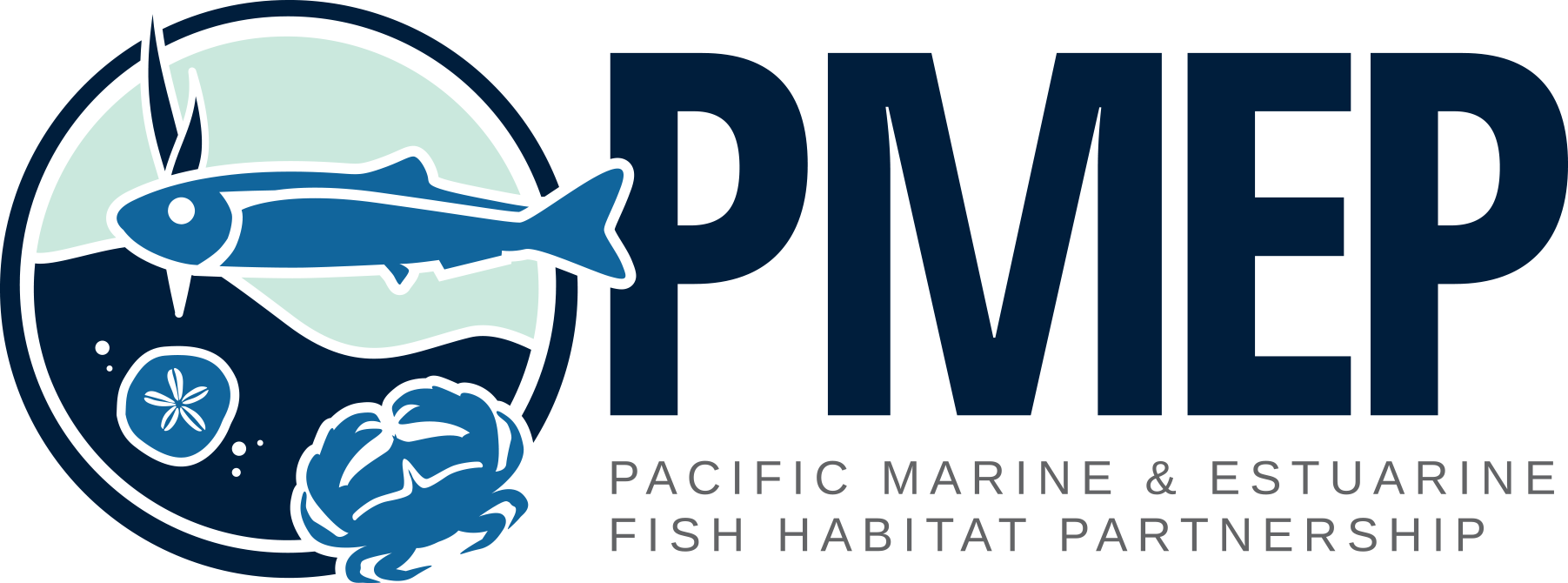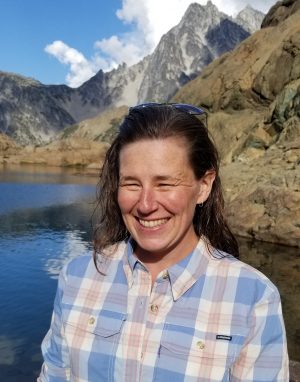We’re happy to welcome Carrie Byron, Puget Sound Acquisition and Restoration (PSAR) Program Manager at the Puget Sound Partnership, to the PMEP Steering Committee! Carrie manages a salmon habitat protection and restoration grant program that supports local priority and regional large capacity salmon recovery projects throughout Puget Sound. Before coming to the Partnership, she worked at the Washington State Department of Ecology, where she managed the Watershed Protection and Restoration Lead Organization grant from EPA’s National Estuary Program. Carrie has also served as the Marine and Nearshore Lead for EPA’s Puget Sound Team and coordinated the Department of Ecology’s Coastal Zone Management Program for five years, where she oversaw the state’s Shoreline Master Program Grants program. She has a Master of Marine Affairs and a Master of Public Administration from the University of Washington’s School of Marine Affairs and Evans School of Public Affairs, respectively, and a B.A. in English from Whitman College. Carrie lives in Seattle and enjoys practicing yoga, hiking, camping, and exploring the outdoors with her family in her spare time.
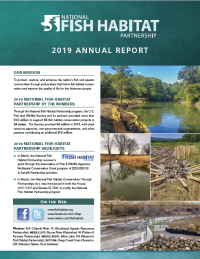
- August 26, 2020
- Joan Drinkwin
- Announcement, Publication
- 0 comments
The National Fish Habitat Partnership released its 2019 Annual Report highlighting progress on its mission to “protect, restore, and enhance the nation’s fish and aquatic communities through partnerships that foster fish habitat conservation and improve the quality of life for the American people.” Through the National Fish Habitat Partnership program, the U.S. Fish and Wildlife Service and its partners provided more than $18 million to support 83 fish habitat conservation projects in 34 states. The Service provided $4 million in 2019, with state resource agencies, non-governmental organizations, and other partners contributing an additional $14 million. read the report here.
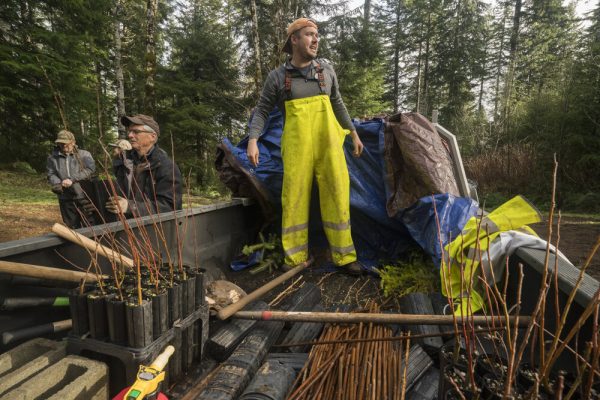
- July 31, 2020
- Joan Drinkwin
- Announcement
- 0 comments
Evan Hayduk, Coordinator of the MidCoast Watersheds Council, was recently awarded the prestigious American Fisheries Society Rising Star Award, which recognizes outstanding early-career contributions in fish habitat conservation. Hayduk recieved a masters degree from the Evergreen State College in 2012 and since 2016 has worked with the Watersheds Council to restore fish habitat. He has overseen several large projects such as the North Creek Culvert Replacement, which restored over 13 miles of habitat with old growth forest for Chinook, coho, sea-run cutthroat trout, steelhead, and lamprey and the Yaquina Estuary Tidal Wetland Restoration project, which is currently under construction and will enhance 20 acres of tidal marsh habitat benefiting Chinook and coho. All Hayduk’s work focuses on restoring ecological processes that sustain the clean water and diverse habitats necessary for salmon and other fish and wildlife.
The award comes with $250 prize money to be provided to a Fish Habitat Partnership of the winner’s choice. PMEP has supported the MidCoast Watershed Council’s Yaquina Estuary Tidal Wetland Restoration Project and so Hayduk chose PMEP to receive the prize money.
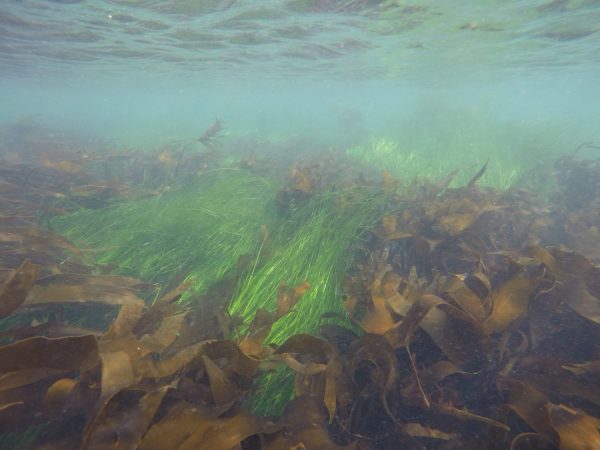
- June 30, 2020
- Joan Drinkwin
- Announcement
- 0 comments
PMEP is pleased to announce the following projects have been selected for funding through the National Fish Habitat Partnership. These projects represent important conservation priorities of PMEP. $192,817 has been awarded to the partnership through the Fish and Aquatic Conservation Program of the U.S. Fish and Wildlife Service for the following five projects:
- Seestrom Tidelands Restoration Project
- Columbia-Pacific Passage, Hungry Harbor Restoration
- Neskowin Fish Passage Improvement Project
- Enhancement of Olympia oysters to provide heterogeneous habitat for fish and invertebrates
- A regional scale assessment of fish habitat along the nearshore of greater Puget Sound
Read more about these and other PMEP funded project here.
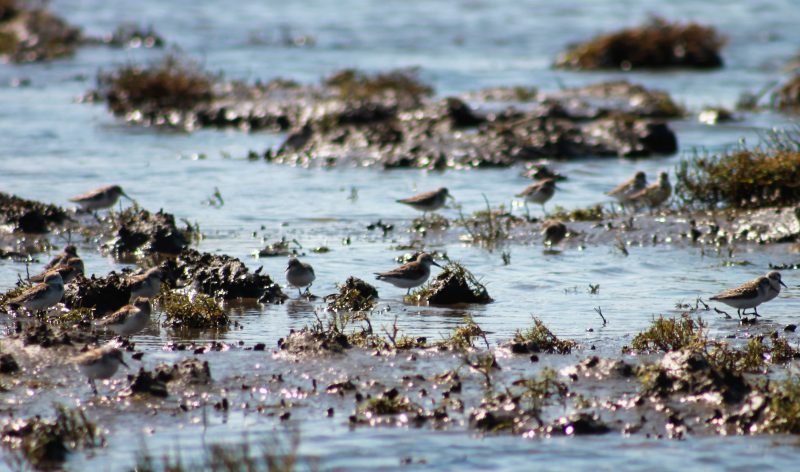
- May 19, 2020
- Joan Drinkwin
- Announcement
- 0 comments
PMEP-supported Bear River Estuary Restoration is included in the National Fish Habitat Partnership list of “Waters to Watch” for 2020. This annual list represents a collection of strategic conservation efforts implemented on rivers, streams, estuaries, and lakes to protect, restore, or enhance fish habitat. These voluntary, locally-driven projects represent some of the top conservation activities completed or in progress by 20 regionally-based Fish Habitat Partnerships throughout the country. These projects are carried out under the goals and objectives of the 2012 National Fish Habitat Action Plan. These conservation projects conserve freshwater, estuarine, and marine habitats essential to many fish and wildlife species. These activities are fundamental to the overall success of the National Fish Habitat Partnership that was established in 2006.
“The projects, which focus on the protection, restoration, and enhancement of fish habitats across the country, are a sampling of the top priorities of our partnerships,” said Ed Schriever, Chair of the National Fish Habitat Board. “The Waters to Watch campaign provides people an opportunity to learn about our projects in a more in-depth way, which exemplifies collaborative conservation involving many partners.”
The 2020 “Waters to Watch” list and associated Fish Habitat Partnerships
- Bear River Estuary, Washington (Retrospective) – Pacific Marine and Estuarine Partnership
- Boone River Watershed, Iowa (Retrospective) – Fishers and Farmers Partnership
- Chipola River, Florida (Retrospective) – Southeast Aquatic Resources Partnership
- Deep Creek Town Diversion and Warner Basin, Oregon (Retrospective) – Western Native Trout Initiative
- Maunalua Bay, Hawai’i – Hawai’i Fish Habitat Partnership
- Minsi Lake, Pennsylvania – Reservoir Fish Habitat Partnership
- San Juan and Santiago Watersheds, California – California Fish Passage Forum
- San Luis Obispo Creek, California – Pacific Lamprey Conservation Initiative
- Shoshone Springs, California (Retrospective) – Desert Fish Habitat Partnership
- Tularosa River, New Mexico – Desert Fish Habitat Partnership
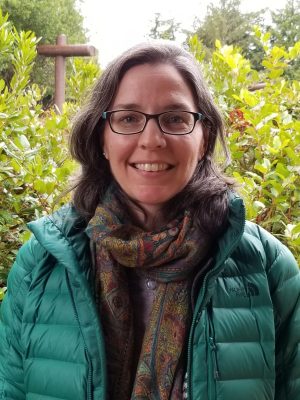
- April 12, 2020
- Joan Drinkwin
- Announcement
- 0 comments
PMEP welcomes Bree Yednock, Reserve Manager at the South Slough National Estuarine Research Reserve (NERR), to its Steering Committee. Bree has been the Reserve Manager at the South Slough NERR since 2018 after serving as the Reserve’s Lead Scientist and Research Coordinator for four years. Before coming to the reserve, she worked for more than 15 years in the fields of science education and research at various non-profits, academic institutions, and agencies in Oregon, Maryland, Georgia, Maine, and Washington. Her research background ranges from field ecology to molecular biology and includes projects related to population genetics of fishery species, environmental adaptation in marine organisms, and estuarine habitat use of fish and invertebrates. She holds a PhD in Environmental and Evolutionary Biology from the University of Louisiana, a MS in Coastal Marine and Wetland Studies from Coastal Carolina University, and a BA in Environmental Studies from the University of Oregon.
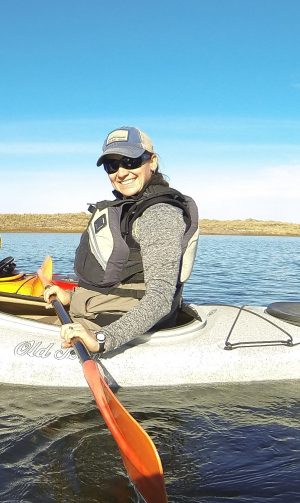
- March 30, 2020
- Joan Drinkwin
- Announcement
- 0 comments
PMEP welcomes Stephanie Messerle, from the Bureau of Land Management, onto our Steering Committee. Stephanie will represent BLM on PMEP, facilitating the sharing of data and support for fish habitat restoration and protection on BLM lands along the US West Coast. Stephanie is the District Fish Biologist for the Coos Bay Bureau of Land Management, located along the Oregon Coast. Prior to joining the Coos Bay District in 2007, Stephanie was a fish biologist for the Medford BLM. She also has worked for the Oregon Department of Fish and Wildlife and the National Park Service’s Biological Resource Division in Utah. Stephanie received a Bachelor of Science Degree in Environmental Science/Biology from Southern Oregon University. Stephanie grew up on the Southern Oregon Coast and is so happy to live there now. Outside of work she stays busy with her two sons and husband enjoying outdoor recreation activities and exploring the beautiful Pacific Northwest.
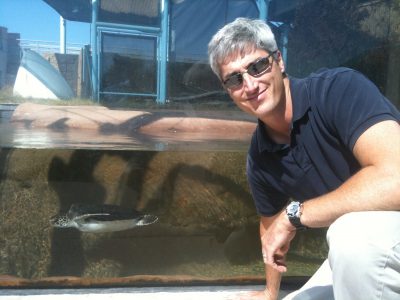
- August 14, 2019
- Joan Drinkwin
- Announcement
- 0 comments
Bryant Chesney is a Senior Marine Habitat Resource Specialist with NOAA’s National Marine Fisheries Service (NMFS) West Coast Region and has worked on a variety of habitat conservation efforts since 2000. Currently, Bryant works in Long Beach, California, and focuses on marine habitat conservation in support of protected species and sustainable fisheries. He is particularly interested in seagrass and rocky reef ecology and conservation. In addition to marine habitat conservation, Bryant supports PRD’s efforts to conserve and recover sea turtles, abalone, and other protected marine species. Bryant works closely with regulatory agencies to provide conservation recommendations for coastal development projects that adversely affect estuarine and marine ecosystems in southern California. Specifically, he has experience with port/harbor development, aquaculture, shoreline protection, transportation, dredging, and fill projects. In addition, Bryant has worked with various partnerships to advance conservation and restoration goals by providing leadership, scientific expertise, and policy support. He has been involved with a number of seagrass transplanting projects and has assisted with studies related to the distribution, ecology, and fishery utilization of eelgrass and has helped advance the status of seagrass conservation and monitoring in California. He also played a significant leadership role in an important wetlands partnership, Southern California Wetlands Recovery Project.
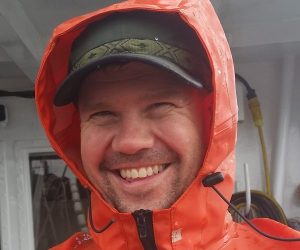
- August 5, 2019
- Joan Drinkwin
- Announcement
- 0 comments
Todd Zackey is the Marine and Nearshore Program Manager for the Tulalip Tribes Natural Resources Department and has been working for the Tribes for 17 years. He manages the research and monitoring efforts for the department in the marine and estuary areas of the Tribes usual and accustomed area and is responsible for mapping, monitoring, assessing, and protecting the Tribes’ nearshore and marine resources on and off the Tulalip Reservation. Todd has conducted and been involved in a variety of monitoring and research projects in the nearshore areas of the Puget Sound including water quality monitoring, mapping of intertidal habitat, studying juvenile salmon utilization of the Snohomish River estuary, pocket estuaries, and small coastal streams and monitoring the recovery of the Qwuloolt Restoration project in the Snohomish River Estuary. Todd is an active member of the Island County Local Integrating Organization, San Juan Salmon Technical Advisory Group, and Co-Chair of the Island County Salmon Technical Advisory Group. Todd is excited to be part of the PMEP Steering Committee and learn about and contribute to efforts to protect, preserve, and recover fish habitat across the entire West Coast.
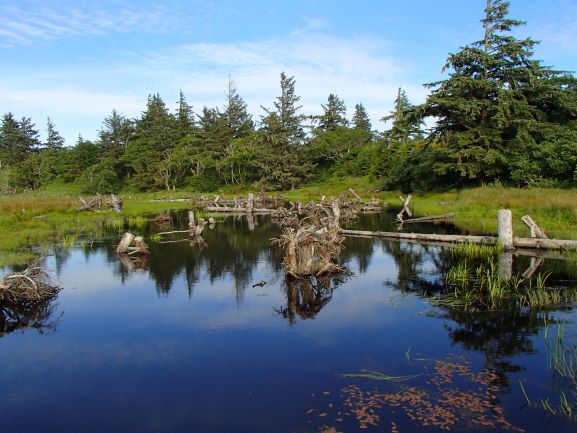
- July 22, 2019
- Joan Drinkwin
- Announcement
- 0 comments
The National Fish Habitat Partnership has unveiled its list of “Waters to Watch” for 2019. This annual list represents a collection of strategic conservation efforts implemented on rivers, streams, estuaries, and lakes to protect, restore, or enhance fish habitat. These voluntary, locally-driven projects represent some of the top conservation activities in progress implemented by 20 regional Fish Habitat Partnerships throughout the country.
Two projects funded by the Pacific Marine and Estuarine Fish Habitat Partnership (PMEP) made the list this year:
Sullivan Gulch Bottomland Restoration restored fish passage and winter rearing habitat for coho salmon and other native fish on 31 acres of the Sixes River estuarine floodplain at Oregon’s Cape Blanco State Park. Coho are listed as Threatened in the Sixes River watershed, and winter rearing habitat is the primary limiting factor to their recovery. The project also restored wetland habitat for shore birds and amphibians; enhanced habitat for migratory songbirds, small mammals, and elk; and improved livestock management on pasture leased to a local ranching family who raise cattle and sheep.
Columbia-Pacific Passage Habitat Restoration at Megler Creek restored off-channel foraging and rearing opportunities for juvenile salmon in the Columbia River estuary. The project is the second phase of a multi-phase effort involving three separate tributaries to the Columbia River estuary. The three sites are located within five miles of each other on the Columbia River shoreline in southwest Washington.
PMEP provides funding for fish habitat restoration and protection projects annually. Watch for the Request for Proposal for 2020 funding in fall 2019.
The 2019 “Waters to Watch” list and associated Fish Habitat Partnerships:
- Alexander Creek, AK – Mat-Su Basin Salmon Habitat Partnership
- Amargo Creek, NM – Desert Fish Habitat Partnership
- Coal Creek, WY – Western Native Trout Initiative
- Crews Creek, GA – Southeast Aquatic Resources Partnership
- Elephant Butte Reservoir, NM – Reservoir Fish Habitat Partnership
- Megler Creek, WA – Pacific Marine and Estuarine Partnership
- Spasski River and Hoonah Native Forest Partnership, AK – SE Alaska Fish Habitat Partnership
- Sullivan Gulch, OR – Pacific Marine and Estuarine Partnership
- Tainter Creek, WI – Fishers and Farmers Partnership/Driftless Area Restoration Effort
- Upper Green Valley Creek, CA – California Fish Passage Forum
